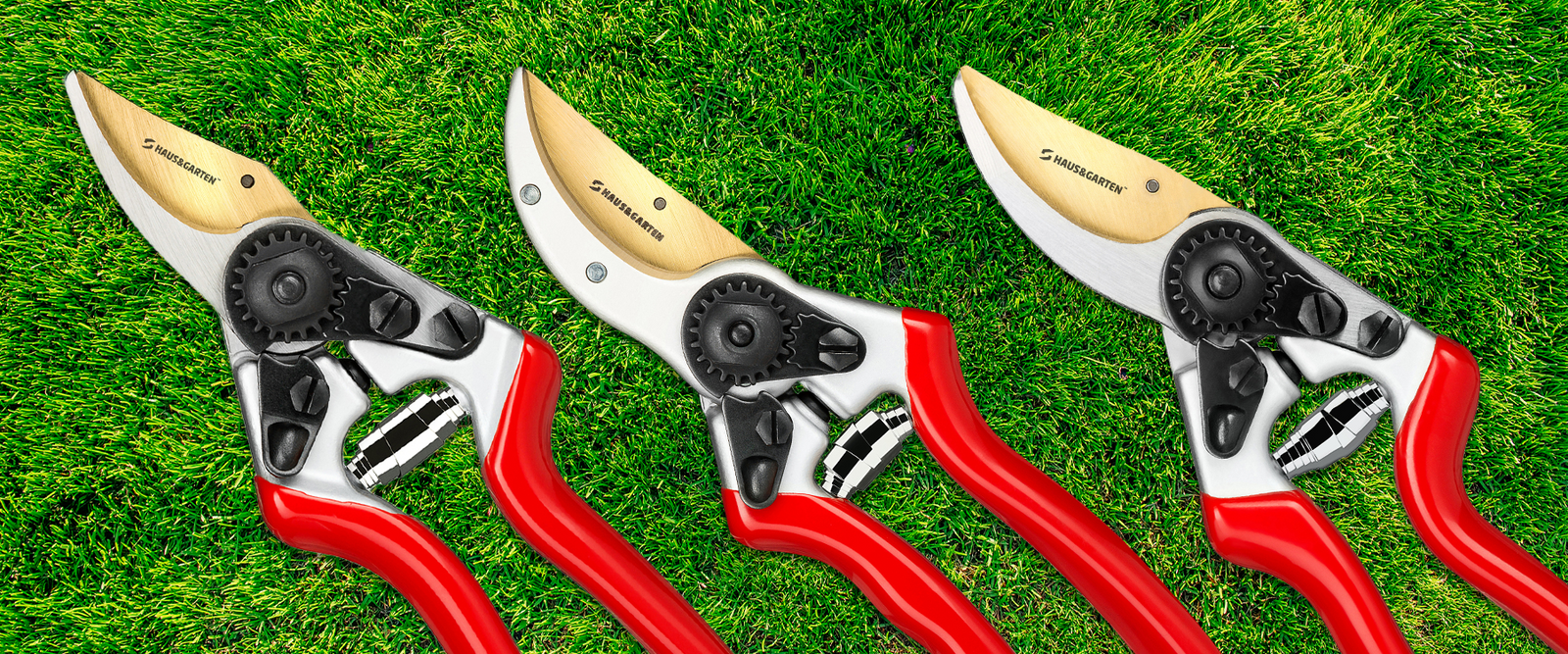Whether you're a hobbyist or professional gardener, purchasing a quality pair of garden shears designed for your specific needs will make your pruning tasks much easier. Regardless of your gardening task (e.g., deadheading, snipping branches, cutting back bushes), a durable and comfortable pair of garden shears is a must-have.
There are so many types of pruning shears available on the market these days that choosing a new pair can feel overwhelming! To make the process easier, I’ve compiled a few key considerations to keep in mind when you’re shopping for new shears:
TYPES OF PRUNING SHEARS
There are 3 basic types of garden shears, each with different applications, blades, cutting actions, and features:
-
Bypass pruning shears are best used for green (i.e., living) wood. The cutting mechanism is similar to a pair of scissors where the blades bypass each other to make a clean cut. This clean cut is best for live plant material as the blades can slice all the way through the stem.
-
Anvil pruning shears are best used for dry branches or old wood. The cutting blade comes down on a flat, wide surface or anvil. The cutting mechanism is similar to a knife cutting through a board, crushing live material, which is why it shouldn’t be used for green wood.
-
Ratchet pruning shears are known for their ratcheting mechanism, which can make pruning easier for people who don’t have as much strength in their hands. Most ratchet pruners have one sharp blade and one flat blade, similar to anvil pruners. This versatile pruner performs its cutting action in stages, making it easier to cut through larger branches.
Regardless of the type of pruner you purchase, here are six tips to help you choose the best pruner for your needs and make it last season after season:
PRO TIP 1: CHOOSE THE RIGHT CUTTING CAPACITY
The cutting capacity of a pruner is determined by the distance between the blades. If you’re snipping flowers and small branches, choose a pruner with at least a 1-inch cutting capacity. Always ensure that the maximum cutting size is right for the job; otherwise, you might damage or even break your pruner.
PRO TIP 2: CONSIDER ERGONOMICS
Pruning can strain your hands, so it’s important to find a comfortable pair that fits your hand size appropriately. I recommend looking for pruners with drop-forged aluminum handles since this material feels solid but is lightweight and easy to hold. Also, consider looking for anti-slip and/or cushioned handles with shock-absorbing pads, which can help reduce the chance of repetitive motion injuries and ensure a safe grip. Some pruners are also ergonomically styled, which means they have a different cutting head position or shape compared to other pruners. These ergonomic pruners align your hand and wrist in a neutral position to minimize injury and can be more comfortable for gardeners with arthritis or carpal tunnel.

PRO TIP 3: LOOK FOR THE RIGHT FEATURES
When comparing pruners, consider what features are important to you and how you’ll use your pruners. For example, most pruners have a safety lock mechanism that keeps the jaws closed when not in use, preventing the blades from being wide open and posing a potential danger in your toolbox. Generally, most good pruners have a sap groove feature that prevents the blade from sticking and channels off debris, saving you time by keeping the blade clean after each cut. This prevents the blades from sticking and reduces the risk of transferring disease from one plant to another. Other important features you may want to consider include the ability to choose between a partially open and fully open cutting position to give you more options when pruning, a wire-cutting notch to cut wires without carrying a separate tool, and the availability of replacement parts so you don’t have to buy a new pruner if a part breaks.
PRO TIP 4: CLEAN FREQUENTLY
Regardless of the pruner you select, cleaning it regularly will help your tool last longer and protect your plants from diseases that can be transferred through dirty tools. Most garden shears can be easily cleaned, but look for ones that can also be disassembled, allowing you to clean the individual parts and remove residue that may build up over time.

PRO TIP 5: USE THE RIGHT AMOUNT OF FORCE
It can be easy to accidentally use too much force when you’re pruning. To check if you’re putting too much force on the blade, inspect the blade edge after making a few cuts. If the edge of the blade appears slightly uneven, you may be exerting too much effort or twisting your hand midway through the cut. Luckily, it’s easy to correct when you know how to use proper pruning techniques.
PRO TIP 6: SHARPEN THE BLADES REGULARLY
To maintain the sharpness and optimum condition of your pruner blades, I recommend using a sharpening tool on your pruner regularly and especially after long pruning sessions. If you’ve never sharpened your pruner blades before, we’ve compiled a simple guide to help walk you through the process.




